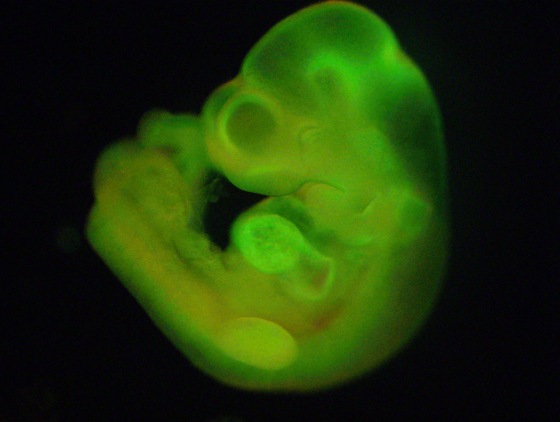Scientists have made a whole new type of stem cell using little more than a little acid, and they say it may represent a way to skip all the complex and controversial steps that it now takes to make cells to regenerate tissues and organs.
The team in Japan includes some of the foremost experts in making what are called pluripotent stem cells — master cells that have the power to morph into any type of cells, from blood to bone to muscle. These master cells look and act like an embryo right after conception and, like a days-old embryo, have the power to generate new tissue of any type.
Making these powerful cells usually requires the use of embryos — something many disapprove of — or tricky mixtures of genes to turn back the clock.
While there’s not an immediate use for the discovery, it could add to the arsenal of tools that scientists can use in trying to find ways to repair the human body, the team reports in this week’s issue of the journal Nature.
“It is also exciting to think about the new possibilities this finding offers, not only in areas like regenerative medicine but also perhaps in the study of senescence and cancer as well,” Haruko Obokata of the RIKEN Center for Developmental Biology in Kobe, Japan, told reporters in a conference call.
Obokata’s team worked with mice, and found they could get ordinary cells from baby mice to turn into pluripotent stem cells by bathing them in a slightly acidic solution. They call them stimulus-triggered acquisition of pluripotency, or STAP, cells.
Other stem cells experts praised the work. “These breakthroughs are so impressive and potentially powerful — truly another dramatic game-changer,” said Dr. Gerald Schatten, a stem cell and genetic engineering expert at the University of Pittsburgh.
“If reproducible in humans, this will be a paradigm changer," said Dr. Robert Lanza of Massachusetts-based Advanced Cell Technology, a company developing stem cell-based treatments.
“It also tells us that normal body cells have an amazing latent capacity, and raises the question ‘what else can our body's cells do under stress?’ That being said, there are a lot of things that work in mice that don't work in humans.”
Stem cells are the body’s master cells, and they’re found all through the body. But usually, they’re differentiated — on a clear road to become blood, or muscle, or nerve, with no turning back. These so-called adult stem cells are most commonly used to replace bone marrow in treating cancer.
What scientists want to do is start with a blank slate, taking cells from a patient that matches his or her DNA perfectly, and growing fresh bone marrow transplants, skin grafts or organs that could treat people without the fear of rejection.
One way to do this is to do what’s called therapeutic cloning — using someone’s cells to make a very early embryo and then harvesting those cells. But it’s almost impossible to do in people and extremely controversial because many people consider the process tantamount to creating a human life and then destroying it.
Scientists found another way to make similar cells called induced pluripotent stem cells (iPS cells) from ordinary pieces of human skin by injecting the genes that make a cell behave like an embryonic stem cell. But this process also isn’t straightforward or trouble-free.
Obokata and colleagues tried something far simpler and less complicated. They tried stressing cells to see what might happen. The idea comes from nature — crocodile eggs develop into either males or females based on temperature, for instance.
Less than half an hour in a slightly acidic solution turned mouse blood cells back into a stem-cell-like state. They injected these new cells into growing mouse embryos and the news cells mixed all through the growing fetal mouse, creating what’s called a chimera, an animal that’s a mix of two different animals.
“The ability to produce chimeras is a property that was previously thought to be exclusive to embryonic stem cells and iPS cells,” stem cell expert Austin Smith of Britain’s Cambridge University wrote in a commentary in Nature.
As with any pluripotent stem cell type, there’s a big danger — that the cells could turn into tumors, notes stem cell expert Dr. John Gearhart of the University of Pennsylvania. And the team will have to show this works on human cells.
And Schatten points out that cells behave differently in lab dishes than they do in the body. Something prevents people from regenerating a lost arm, for instance.
Another caveat: If this works as well in humans as it does in mice, it could offer another route to cloning human beings, Lanza noted. “This research could have serious ethical ramifications,” he said.
